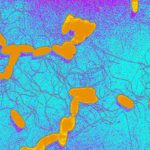Link to Pubmed [PMID] – 23930725
Paediatr Int Child Health 2013 Aug;33(3):139-44
BACKGROUND: In sub-Saharan Africa, infectious diarrhoea is a major cause of childhood morbidity and mortality. A cross-sectional study was undertaken to document the pathogens potentially involved in community-acquired childhood diarrhoea in Dakar, the capital of Senegal.
METHODS: Between September 2007 and March 2008, 176 children aged 1 month to 5 years were recruited consecutively from a primary health care institution in an urban area. Clinical data were recorded and stool samples were collected. Bacterial pathogens were identified using conventional methods and/or PCR assays. Rotaviruses and adenoviruses were detected by a rapid immunochromatographic test. Intestinal parasites were diagnosed by microscopy.
RESULTS: Rotavirus was the most common enteric pathogen, detected in 27% of patients, followed by Shigella (12%), diarrhoeagenic Escherichia coli (8%), enteric adenovirus (8%), Salmonella (4%), Campylobacter jejuni (3%) and Plesiomonas shigelloides (2%). Mixed bacterial/viral infections were detected in 6% of cases. Parasites, mostly protozoa, were detected in 14% of children. Using ipaH PCR, 30% of samples were positive for Shigella/entero-invasive E. coli. Detection of rotavirus was more frequently associated with younger age groups (<24 months), whereas bacterial diarrhoea was isolated more often in children over 1 year of age. Detection of bacterial pathogens was significantly associated with malnutrition. Antibiotics were prescribed for 77% of children who attended for consultation. No pathogen was found in 36% of them, whereas a virus was detected without any other associated bacterial or parasitic pathogen in 23% of patients.
CONCLUSION: In developing countries, there is a need to develop reliable, easy-to-use, inexpensive rapid diagnostic tests to guide the management of diarrhoea in infants and children and thereby prevent over-use of antimicrobial agents.
